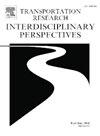Evaluating completeness and positional accuracy of traditional utility records compared to subsurface utility engineering: A comparative case study analysis
IF 3.8
Q2 TRANSPORTATION
Transportation Research Interdisciplinary Perspectives
Pub Date : 2025-07-01
DOI:10.1016/j.trip.2025.101539
引用次数: 0
Abstract
Accurate and complete mapping of subsurface utilities such as gas lines, water pipes, and power cables is essential for efficient and safe infrastructure projects. This study investigates the completeness, positional accuracy, and reliability of traditional utility records compared to Subsurface Utility Engineering (SUE) investigation data by examining documented utilities for a highway reconstruction project in South Dakota. SUE investigations followed the Quality Level standards defined in the American Society of Civil Engineers (ASCE) 38–22 “Standard Guideline for investigating and documenting existing utilities.” A composite map was developed by overlaying the traditional and SUE investigation datasets. An analysis of the linear footage mapped revealed significant under-documentation in the traditional records, known as One Call records, with SUE investigations designating and mapping 160% more utility infrastructure across all asset types. Positional accuracy metrics further exposed deficiencies in traditional mapping. Only 32% of utility footage analyzed aligned within 2 feet (ft) when comparing One Call records to SUE investigation data. Moreover, about 21% of utilities in One Call records deviated by over 20 ft compared to the SUE data. These findings demonstrate the necessity of rigorous SUE practices to mitigate risks from inaccurate and incomplete utility data. SUE provides comprehensive, precise subsurface infrastructure mapping, which is essential for informed engineering design, conflict prevention, and efficient, low-risk construction. This study affirms SUE’s value in reducing utility-related risks and supporting efficient project delivery through accurate subsurface mapping.
评估传统公用事业记录与地下公用事业工程的完整性和定位准确性:比较案例研究分析
准确、完整地测绘地下公用设施,如天然气管道、水管和电力电缆,对于高效、安全的基础设施项目至关重要。本研究通过检查南达科他州公路重建项目的公用事业文件,将传统公用事业记录的完整性、定位准确性和可靠性与地下公用事业工程(SUE)调查数据进行比较。SUE调查遵循美国土木工程师协会(ASCE) 38-22“调查和记录现有公用事业的标准指南”中定义的质量水平标准。将传统数据集与苏调查数据集进行叠加,形成复合地图。对绘制的线性影像的分析显示,传统记录(即One Call记录)中存在严重的文件不足,SUE调查指定和绘制的公用事业基础设施在所有资产类型中增加了160%。定位精度指标进一步暴露了传统测绘的不足。当将One Call记录与SUE调查数据进行比较时,只有32%的公用事业数据在2英尺(ft)内。此外,与SUE数据相比,One Call记录中约21%的公用事业偏离超过20英尺。这些发现证明了严格的SUE实践的必要性,以减轻不准确和不完整的公用事业数据带来的风险。SUE提供全面、精确的地下基础设施测绘,这对于明智的工程设计、冲突预防和高效、低风险的施工至关重要。这项研究肯定了SUE在减少公用事业相关风险和通过精确的地下测绘支持高效项目交付方面的价值。
本文章由计算机程序翻译,如有差异,请以英文原文为准。
求助全文
约1分钟内获得全文
求助全文
来源期刊

Transportation Research Interdisciplinary Perspectives
Engineering-Automotive Engineering
CiteScore
12.90
自引率
0.00%
发文量
185
审稿时长
22 weeks
 求助内容:
求助内容: 应助结果提醒方式:
应助结果提醒方式:


